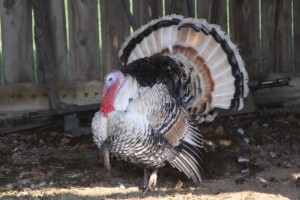In 1620, a small ship named the Mayflower left Plymouth, England with 102 passengers. They were seeking a new home where they could freely practice their faith and were lured by the promise of land ownership and future prosperity in the New World. After a difficult 66 day voyage across the Atlantic Ocean, they arrived near present day Cape Cod at the mouth of the Hudson River. Eventually the Pilgrims crossed Massachusetts Bay to establish a village they named Plymouth.
During that first brutal winter, the colonists were exposed to harsh weather conditions and they suffered from scurvy and contagious disease outbreaks. When their first spring in the New World came only half of the original passengers had survived. Weakened by malnutrition and illness, the Pilgrims formed an alliance with the local Native Americans tribe called the Wampanoag who taught them how to cultivate corn, catch fish in the rivers and avoid the poisonous plants.
In 1621, the Pilgrims organized a feast to celebrate their first successful corn harvest. To show their respect and appreciation, they invited the Wampanoag. Now remembered as America’s first Thanksgiving, no records exist of the historic menu. The journals of the colonists mention a fowl hunting expedition and also note that the Wampanoag supplied the feast with five deer. Historians suggest that many of the dishes served were prepared using traditional Native American cooking methods and local spices. Since the Pilgrims sugar supply had dwindled over their first year in the New World, it is very unlikely that the menu included the pies or cakes that have become associated with our modern celebration.
THANKSGIVING AS AN OFFICAL HOLIDAY –
In 1789, several years after the conclusion of the Revolutionary War, George Washington issued the first Thanksgiving proclamation. He called upon Americans to express gratitude for the fight for independence and the successful ratification of the U.S. Constitution. Both John Adams and Thomas Jefferson continued this tradition of a Thanksgiving celebration during their presidential administrations.
In 1863, at the height of the Civil War, Abraham Lincoln proclaimed that a Thanksgiving Day will be celebrated the last Thursday in November to heal the wounds of the nation and pray for the widows and orphans of the war between the North and South.
It was celebrated on that day every year until 1939, when Franklin D. Roosevelt moved the holiday forward one week to extend the holiday shopping period as an attempt to increase retail sales during the Great Depression. In 1941, a bill was signed making Thanksgiving officially the fourth Thursday in November and has been celebrated on that day ever since.

